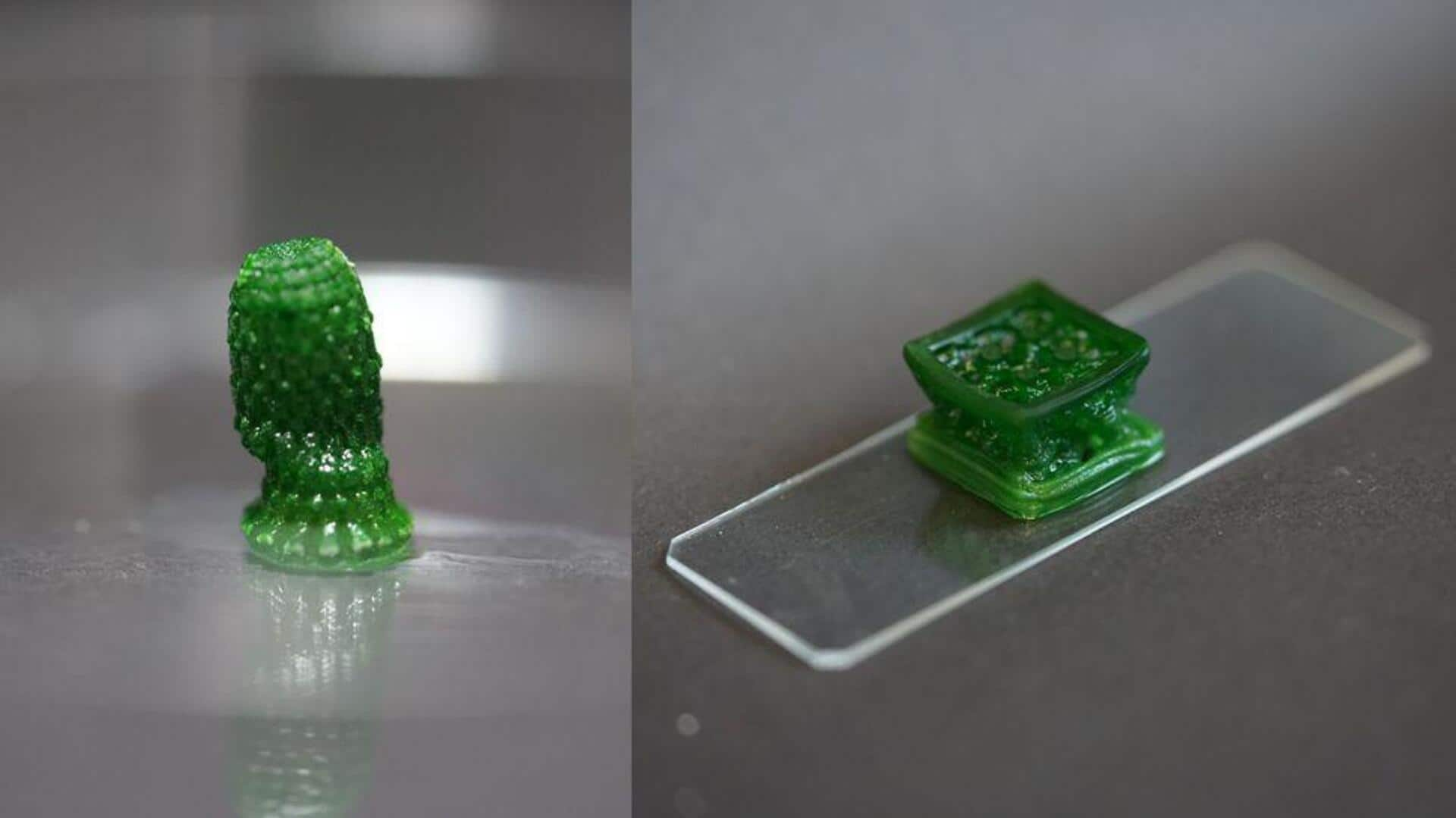
Researchers develop 'living' material that can absorb atmospheric CO2
What's the story
Swiss researchers have developed a revolutionary 'living' building material that absorbs carbon dioxide (CO2) from the atmosphere. The innovative substance is made of blue-green algae (cyanobacteria), which photosynthesize CO2 into oxygen and sugars. Under specific nutrient conditions, it can also convert CO2 into strong, sustainable construction components and solid minerals like limestone. This could change how we construct our cities, creating structures that combat climate change while remaining durable.
Mechanism
How the material works
The material is a 3D-printable hydrogel, a water-rich gel-like substance. Scientists have created a porous structure in the hydrogel, letting light, water, and CO2 pass through freely to keep the algae alive. The cyanobacteria absorb CO2 from the air and store it as biomass (where growing algae incorporate CO2 into themselves) or carbonate minerals (where CO2 is permanently stored, strengthening the material).
Research results
It captured CO₂ continuously for 400 days
In a 400-day study, the material continuously absorbed CO2, storing about 26mg of CO2 as a solid per gram of material. Even though algae growth slows after 30 days, CO2 absorption doesn't stop completely as mineral accumulation continues over time. The researchers envision this material being used as a coating on building walls, allowing structures to absorb atmospheric CO2 and help reduce carbon emissions.
Future prospects
Material showcased in Venice
At an architecture exhibition in Venice, Italy, ETH Zurich researchers showcased the material in shapes resembling tree trunks.It is estimated to absorb around 18kg of CO2 annually, equivalent to a 20-year-old pine tree. Researchers think that genetically engineering the cyanobacteria to make them more photosynthetically efficient could further improve the material's efficiency. Work is also underway on nutrient delivery systems to keep the material alive and effective for longer periods.